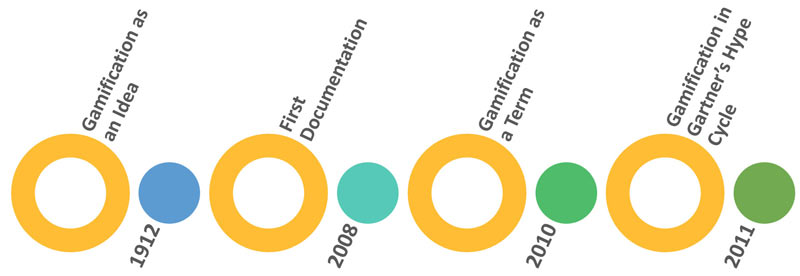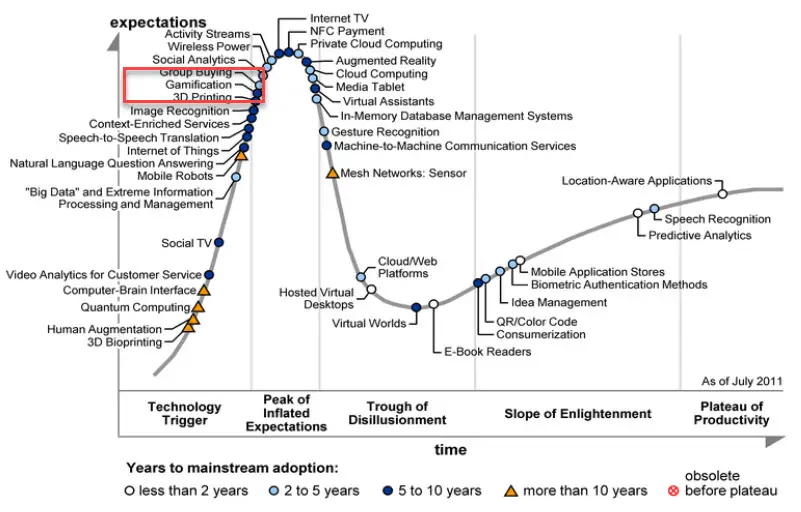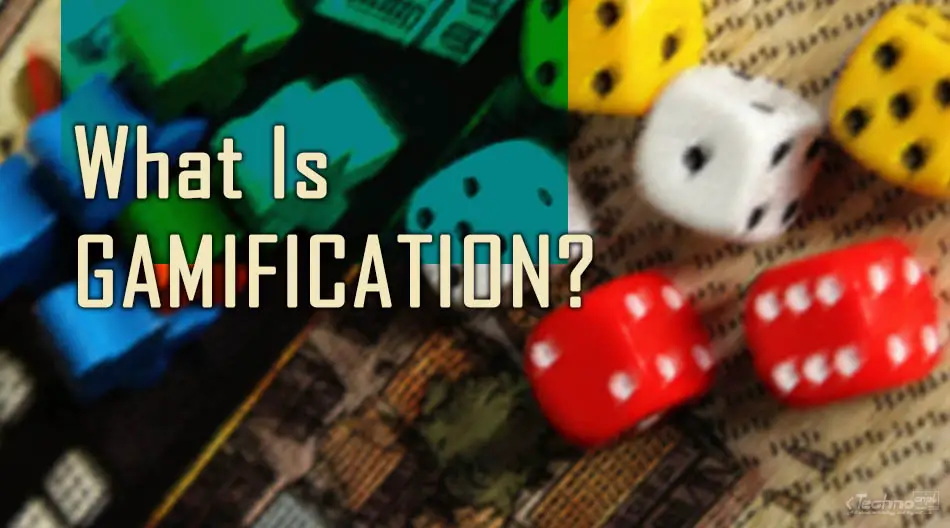Gamification is using game techniques in the context of other activities, to make them more interactive and interesting. In this article, we provide a brief overview of the Gamification concept, definition, history, and evolution.
1. Overview
Due to their routine nature, daily life activities hold on low levels of interaction and stimulation. The combination of these activities with simple game techniques might lead to a more effective and motivating environment.
Thus, Gamification is the process of transforming boring and routine activities into games. This approach has become popular in many domains, such as business, marketing, and education.
During recent years, we have witnessed an increasing spread of customer-oriented software and applications. Most of which benefit from the intelligent and interactive techniques of video games. Almost all these applications are “gamified applications”.
2. Gamification vs Other Concepts
Gamification is a relatively new concept, mainly inspired by the development of the web industry.
Moreover, Gamification is not an isolated concept, it is a part of a wide range of research and concepts, mostly related to human-computer interactions (HCI). Such as Serious Games, Pervasive Games, and Alternate Reality Games.
That being said, the borders between the Gamification term and other related concepts are not clear, or at least not agreed upon. Thus, more research and clarification should be done to better understand this concept and form its identity.
3. Definition of Gamification
Despite having many different definitions of gamification, most of them agree that it is:
Utilizing game techniques, elements, thinking, or design within non-game contexts, applications, systems, or services.
In order to:
Motivate users, increase their engagement levels within the environment, and encourage them to interact with the targeted applications.
On the other hand, others describe gamification in the context of computer and video games. So, they define it as:
Using video game components within non-game services and systems, to improve user experience and interaction with such services.
Gamification by Oxford Dictionary
Oxford Dictionary added Gamification to its list of terms in 2011 and defined it as:
The use of elements of game-playing in another activity, usually in order to make that activity more interesting.

Gamification as a Tool
Some experts prefer to describe gamification as:
A tool for designing behavior, developing skills, and fostering innovation.
This tool could lead to an improvement in the user’s experience and better management of his/her interactions. Specifically when combined with technology and other trends.
Gamification by IT Experts
For IT specialists, gamification is:
An additional design and development layer can be added for both deployed or under-development applications. It is a layer of services that provides applications with rewards, points, and badges.
Gamification by Marketers
For marketers, gamification is:
A packaging of services that provides feedback and interaction mechanisms, in order to achieve the highest level of user satisfaction.
Gamification by Sellers and Consultants
For merchants and consultants:
Gamification is associated with rewards usually granted to customers when selling a specific product.
4. History of Gamification
As mentioned earlier, Gamification is not a totally new concept. Several attempts have been made previously to extract elements (such as feedback, points, badges, leader-board, …) from games. In order to be used in other activities within several domains, primarily in the field of business and marketing.

1912: Gamification as an Idea
It is a bit difficult to determine the very first introduction of Gamification as a term. However, some agree that the year 1912 witnessed the first appearance of the idea of gamification.
It was when a popcorn company concealed free prizes in the bags it sells!

The following decades witnessed many events that can be considered parts of the term development. For example, the establishment of consulting companies and initiatives to use games for social applications. As well as creating gamified platforms to create interactive processes using pre-made elements, such as points, badges, and leaderboards.
2008: First Documentation of Gamification
Upon the appearance of gamification as an idea, its adoption as a term dates back to the beginning of the third millennium, within the field of the digital media industry.
Nevertheless, the first documented use of Gamification dates back to 2008.
2010: Gamification as a Term
Many research studies agree that the second half of 2010 marked the digital appearance of Gamification as a term. Where it started to show in search engines like Google.
2011: Gamification in Gartner’s Hype Cycle
In 2011, Gamification was added to Gartner’s Hype Cycle for Emerging Technologies. When Gartner’s Group predicted that by 2014, 80% of gamified applications would fail to achieve their goals due to their poor design.

We think that, to some extent, this prediction was correct, since the misunderstanding of basic principles of gamified design could negatively impact the production of a successful gamified process.
5. Conclusion
Gamification is a relatively new term, which summarizes earlier stages of experiments of leveraging game capabilities in other contexts. It refers to using game techniques in different fields to motivate users, increase their interaction, and create loyalty to the targeted service.
Recently, the Gamification term has witnessed huge success within multiple domains, especially business and marketing. Its main effect is exploited to maintain customers’ loyalty and engage them in the targeted services.

